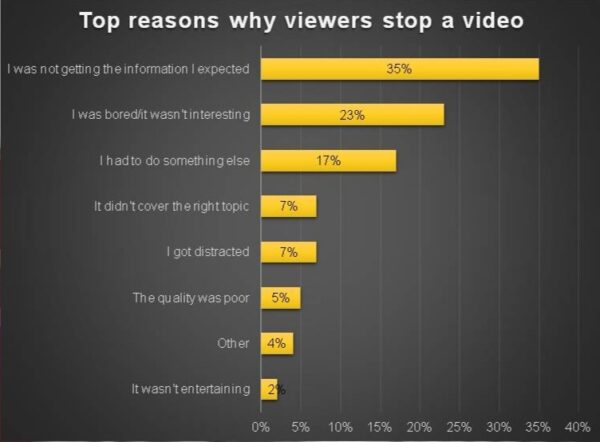Stop spinning your wheels by focusing on content that matters

Introduction
We work with people every day to build and rework their websites, and we often see them spinning their wheels. And truth be told, we spin our wheels from time to time too.
If these common scenarios apply to you, you’re not alone:
- The web content for your organization is no one’s full-time job.
- There are too many cooks (i.e., too many stakeholders) in that kitchen.
- Writing is hard, for everyone, even those who identify as “writers.”
- Your content management system may be old and restrictive and in desperate need of an overhaul… but…
- Redesigns can seem big and scary (not to mention expensive and time-consuming).
Kudos to you if this isn’t your situation. Live your live and be free! But if this sounds familiar, there is hope.
You can take some pressure off by ditching some long-held beliefs about the web — things that just seem to keep sticking, and keep people spinning. Maybe you’ve heard some of these:
“We’ve got to keep the homepage fresh.”
“We’ve got to keep the homepage fresh.”
Site visitors don’t say this… site managers say this. Gather analytics on how many of your site visitors are actually frequent fliers, and how many of them actually enter your site through the homepage, to gain a better perspective of priority.
Focus instead on: keeping your content accurate and worrying less about “fresh.”
“If it’s important, it should live above the fold.”
What is “the fold” in 2022? Websites aren’t newspapers, and “the fold” is different for everyone depending on device, connection speed, browser… the list goes on. People love to scroll, and content-rich pages are good for SEO.
Focus instead on: putting content where its target audience can easily find it.

“Is this… too many clicks?”
“Is this… too many clicks?”
Let’s bury once and for all the pervasive myth that nothing should be more than a magical ~3~ clicks away on the web. What exhausts and frustrates us is cognitive overload, not the physical exertion of clicking. Clicking is easier than thinking, in other words.
Focus instead on: making sure your information architecture doesn’t present confusing or overwhelming options, creating more cognitive load for site visitors.
“We need to post a lot of news.”
If you have timely content that meets both site visitor and organizational or business goals, great, you might want to share that. But approach it strategically: do you have the time, resources, and people to populate a news section and keep it up-to-date? Most folks don’t. Maybe your timely content is better suited for social media (for sharing links to news about your organization), or an announcement bar on your site (for sharing information like deadlines or important COVID updates). If, however, you have a team of people who are prepared and willing to write in-depth, regular articles that appeal to your site visitors… that sounds like news to me, baby.
Focus instead on: communicating timely content you have.
“Our public website is also our intranet.”
I mean, you’ve got this website, why not put all your content there, right?
But remember our mantra? Your content is not for you. It might be convenient for you to put internal-facing content on your public site, but it doesn’t mean it’s helpful for anyone but you.
The more content on a site, the more people have to sort through to find what they need. This gives both internal and external audiences a more muddled experience (and higher cognitive load). You’re giving everyone a big closet when what they need are smaller drawers.
And if you’re storing more sensitive information like employee policies and documents on your site, does it make sense for that to be open to the public too?
Consider using intranet alternatives, like Microsoft Teams, Box, or Google Sites to house your content for internal audiences. If that’s not an option for you, reduce cognitive load for everyone by labeling internal clearly and separating it from primary content.
Focus instead on: remembering that your public website is just that… public.
“You know what’s cool? Video is cool. We really need to do a video.”
Video is cool! Videos can convey richer stories quicker than text content alone, and can imbue a sense of voice, place, and personality. But they’re not a silver bullet. They’re expensive (whether in time, money, resources, or all of the above), and they fall out of date quickly. They can be inaccessible to visitors without closed captioning (more effort, though worth it). People ignore them and are quick to stop watching when they get bored or aren’t finding the information they need.
Focus instead on: quality written content that’s found by search engines, accessible to audiences, and gives your visitors the information they need. Then think about what needs, if any, can be better served by video and whether the effort is worthwhile.

Above all remember: it’s just a website.
Above all remember: it’s just a website.
Listen, I believe in this work! Websites can actually change people’s lives, in ways big and small. Great content guides and informs real people every day. It helps them make important decisions that affect their lives, their futures, their finances, and their families.
But most websites aren’t life or death.
It’s okay to make incremental changes. Focus on the content and features that you know site visitors need. Let it live for a while, and test it if you can, then repeat.
Content strategy is about learning and prioritizing. Every content change requires some level of effort, and spending more effort in one place means less effort in another.
Try to make focused decisions based on what you know about your site visitors, and don’t worry too much about what others are doing.
And if you feel yourself or your team still spinning your wheels, reach out to us!